Blog Archives
Home -
Posts tagged "Elephants"
Performing animals at the circus are held captive, forced to train and perform unnatural routines in front of crowds and to travel long distances in cramped conditions. Their lives are difficult, disorienting, uncomfortable and exposed. Wild animals often escape from the circus and there have been many cases of abuse and maltreatment.
Fortunately the days of performing animals at the circus are numbered. SoulUniverse circus has become the latest circus to drop performing animals from their routine, under pressure from animal rights activists, led by PETA. They join the list of circus companies who have moved beyond using animals like Lions, Bears, Tigers and Elephants. These include Ringling brothers and Barnum and Bailey circus,
Animal control officers had observed animals being mistreated or neglected at the UniverSoul circus. Big cats were locked in cramped cages all day, elephants and tigers were denied veterinary care and animals were often wounded and frequently attempted to escape.
“Exotic” animals are often forced to work to provide entertainment for humans. The circus is one of the contexts in which animals like big Cats, Elephants or Zebras are forced to work, but other examples include rides or at petting zoos. Larger animals are often made into a spectacle and kept in unnaturally cramped and restrictive conditions that are both physically and psychologically distressing. The concept of the circus should be one that revolves around fun, artistry and highly skilled human performers that choose to perform, not animals who don’t consent to be there.
If you’re visiting the circus with children, PETA has a list of animal-free circuses you can consult. (Please check to ensure all information is up to date). https://www.peta.org/wp-content/uploads/2021/06/animal-free-circuses-pdf.pdf
|
Tags: "Exotic" Animals,
Animal Freedom,
Animal Labor,
animal rights,
Bears,
Big Cats,
Circus Animals,
Elephants,
Kevin Boileau,
Lions,
Nazarita Goldhammer,
Tigers,
Working Animals,
Zebras
In an ideal world, mourning the death of any living being should not bring relief for their passing. When death brings relief because a being has been suffering unimaginably however, we are glad the suffering has passed out of the world, at least. Often, the suffering of any animal comes in the form of pain or illness. In the case of Tikiri, the 70 year old elephant, her suffering was a result of years’ of slavery and abuse. The 70 year old Tikiri the elephant came to the world’s attention due to her emaciated appearance at a religious festival in Sri Lanka. The animal was used in a parade for 10 days each year. She was photographed in a skeletal, emaciated state, apparently malnourished and exhausted by her job. The elephant would march for days at this festival while hungry, exhausted and at an advanced age. Her body was covered with decorations to hide her terrible condition. Tikiri had been a working animal all her life, and was forced to march, despite being “India’s oldest elephant.”
It’s easy to forget that “fun elephant rides” for tourists are the other face of animal slavery. If tourists and those attending religious festivals boycott attractions and entertainments based on elephant slavery, unnecessary suffering could be prevented. That way, Tikiri’s suffering could at least lead to some kind of justice for others’ like her.
https://www.cnn.com/2019/09/25/asia/emaciated-elephant-death-sri-lanka-scli-intl/index.html
One of the saddest things about animal captivity is how it leaves animals alone and isolated. An elephant named Flavia who was called “the saddest elephant in the world” has just died at age 47, after collapsing in her enclosure. Flavia was suffering from depression before her death and spent most of her life alone. What the public sees as merely a viewing enclosure where humans passively watch animals, the media have rightly called “solitary confinement.” Elephants are social animals who form strong bonds within their families, just as humans do. This kind of living situation for a human would rightly be branded as a form of torture. Why is it OK for animals to be abandoned in isolation? Laws that prevent harm to animals don’t yet accommodate for the kind of harm we assume is only relevant for humans – that is psychological harm. Animals are not merely automatons, they are social creatures. Read more about Flavia the elephant and sign the petition to ask Cordoba zoo not to place an elephant in the same situation as Flavia:
https://ladyfreethinker.org/sign-justice-for-saddest-elephant-in-the-world-who-died-in-solitary-confinement/?utm_source=Newsletter&utm_medium=Email
https://www.independent.co.uk/news/world/europe/elephant-worlds-saddest-dead-zoo-spain-a8809071.html
When humans hunt animals, animals learn to fear them. They hide, they move their dwelling places, change their feeding patterns. In our limited view of animals, this might seem obvious – that animals change their behavior outwardly, as if they are automatic, soulless creatures. But the real wake-up call is that animals change internally in response to us (see this recent blog on whales’ stress response). Whole populations of animals change – they breed differently, they lay down different patterns, sometimes within a generation. The classic example that is often cited is of the moths that changed their color due to industrialization. Now it seems, elephants in Mozambique are evolving to lose their tusks. According to this article, a third of female elephants in Mozambique have no tusks, and in Gorongosa, by the 2000s, 98% of the female population had no tusks.
The threat of humans from poachers can’t be underestimated. Human poachers often target elephants from small planes or helicopters. They literally pick off elephants with tusks from above, annihilating them in front of groups of their family and friends. Elephants, like humans, are animals with strong family structures. Like a war torn human population, elephants become refugees from their own territory. They are forced to adapt, survive and live a fugitive life. There is no way to fully express the damage done to the elephant population by poachers, but it’s instructive to think of it in terms that humans would understand – war. The damage is experienced on many levels, emotional, physical and physiological. The loss of something essential to an elephant like tusks is a sign of how deep the damage can reach. Please help support African Elephants by donating to the AWF, among others.
Read More:
https://www.businessinsider.com/african-elephants-are-evolving-to-not-grow-tusks-because-of-poachers-2018-11?fbclid=IwAR2mxf0FgehljjqSAtnmoNIfhCTqRzsqKW1SIYD7UNiPvRYVY35c_EOxauA


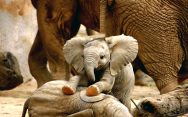
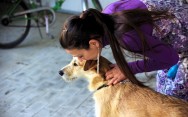

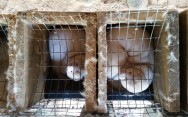
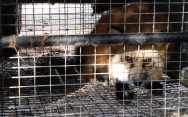
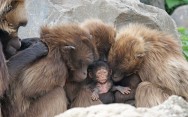
Social Media